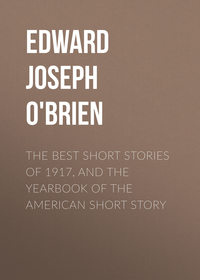Kitabı oku: «The Best Short Stories of 1917, and the Yearbook of the American Short Story», sayfa 35
Bir şeyler ters gitti, lütfen daha sonra tekrar deneyin
Türler ve etiketler
Yaş sınırı:
0+Litres'teki yayın tarihi:
07 mayıs 2019Hacim:
693 s. 6 illüstrasyonTelif hakkı:
Public Domain